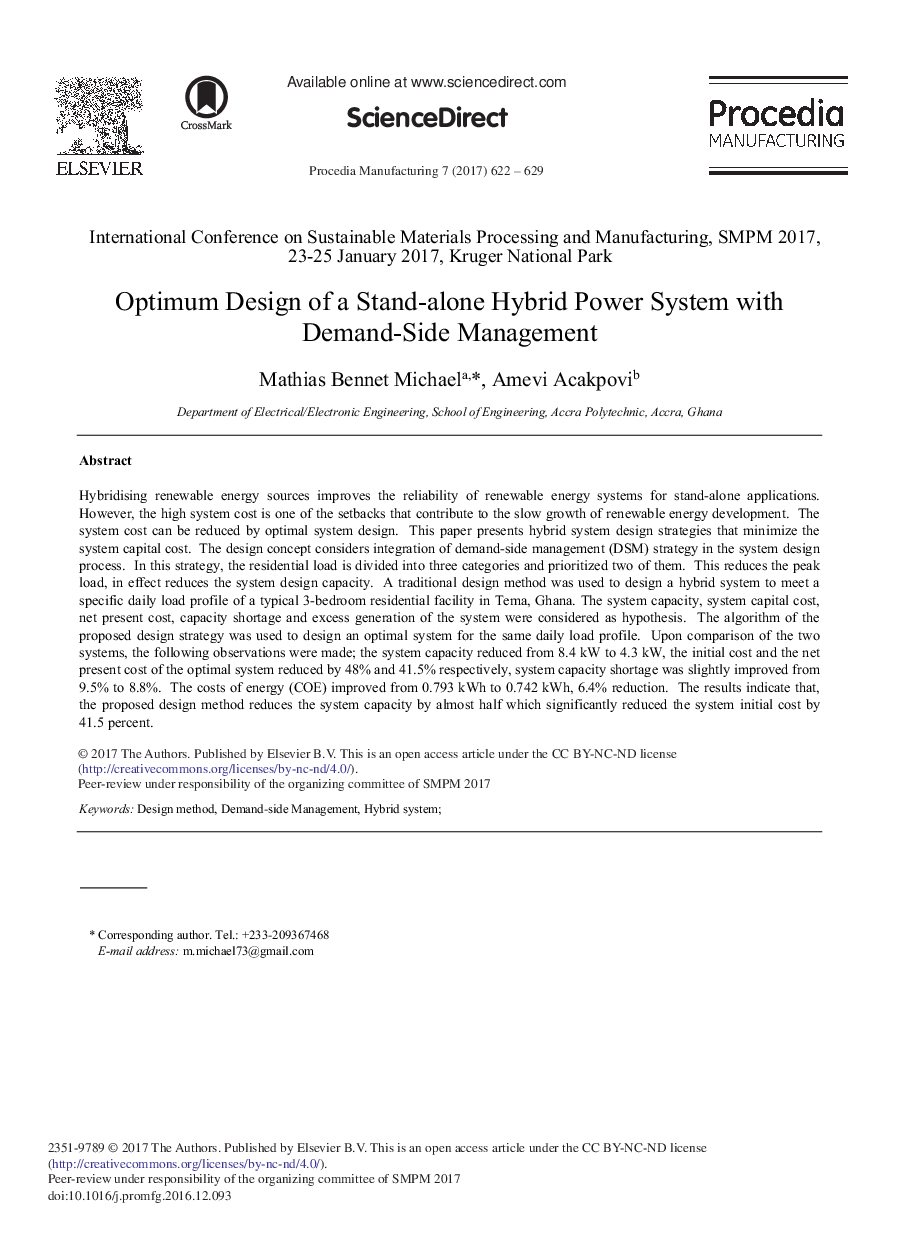| Article ID | Journal | Published Year | Pages | File Type |
|---|---|---|---|---|
| 5129219 | Procedia Manufacturing | 2017 | 8 Pages |
Hybridising renewable energy sources improves the reliability of renewable energy systems for stand-alone applications. However, the high system cost is one of the setbacks that contribute to the slow growth of renewable energy development. The system cost can be reduced by optimal system design. This paper presents hybrid system design strategies that minimize the system capital cost. The design concept considers integration of demand-side management (DSM) strategy in the system design process. In this strategy, the residential load is divided into three categories and prioritized two of them. This reduces the peak load, in effect reduces the system design capacity. A traditional design method was used to design a hybrid system to meet a specific daily load profile of a typical 3-bedroom residential facility in Tema, Ghana. The system capacity, system capital cost, net present cost, capacity shortage and excess generation of the system were considered as hypothesis. The algorithm of the proposed design strategy was used to design an optimal system for the same daily load profile. Upon comparison of the two systems, the following observations were made; the system capacity reduced from 8.4 kW to 4.3 kW, the initial cost and the net present cost of the optimal system reduced by 48% and 41.5% respectively, system capacity shortage was slightly improved from 9.5% to 8.8%. The costs of energy (COE) improved from 0.793 kWh to 0.742 kWh, 6.4% reduction. The results indicate that, the proposed design method reduces the system capacity by almost half which significantly reduced the system initial cost by 41.5 percent.
